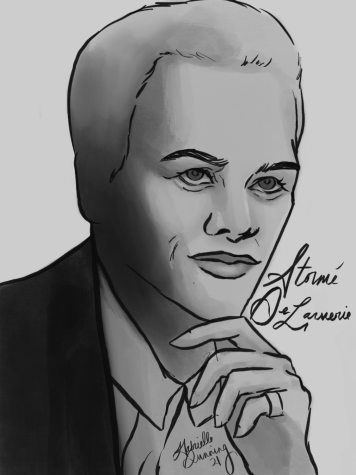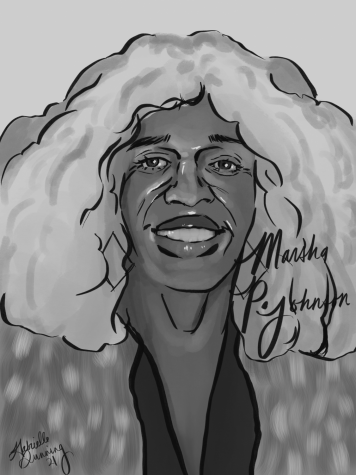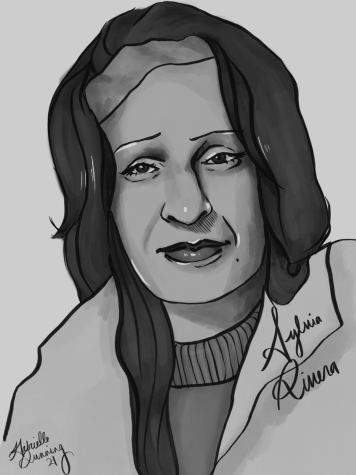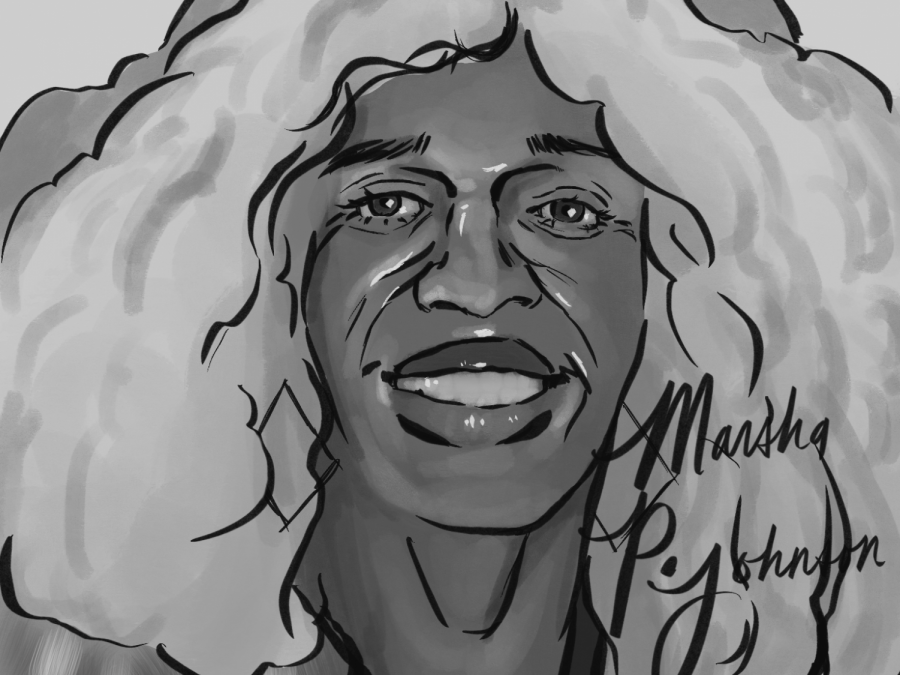Digital drawing of Marsha P. Johnson by Gabrielle Dunning.
Greenwich Village’s Stonewall Riot: The Birth of the Gay Liberation Front and STAR and the Women Behind Them
The Stonewall Inn was a gay bar in the Greenwich Village neighborhood of Lower Manhattan, New York City, and the site of the 1969 Stonewall Riots – which is considered to be the single most important event to the gay liberation movement and the modern fight for LGBTQ+ rights in the US. At the time, homosexual acts remained illegal in every state except Illinois, establishments could be closed for having employees who weren’t straight or serving queer patrons, and most gay bars and clubs were owned by the Mafia, who would pay off corrupt officers and blackmail wealthy gay patrons. Police raiding gay bars was common but this night members of NYC’s LGBTQ+ community decided to fight back and sparked an uprising that started a new era of queer resistance and revolution.

The original Inn operated between 1967 and 1969 and was located at 51-53 Christopher Street, between Seventh Avenue South and Waverly Place. Stonewall served as a safe space for New York’s queer and trans community, until the Tuesday before the riots began. NYPD conspired to target the bar for operating without a proper liquor license and conducted an evening raid on Stonewall, arresting some employees and confiscating their liquor then planned for a second raid on the following Friday, which they hoped would shut down the bar. Once the officers arrived at an erupted crowd and beat an activist named Stormé DeLarverie, who was attributed to throwing the first punch back, the crowd began throwing whatever they could get their hands on at the police – the protest spilled into the neighboring streets and order wasn’t restored until some time after 4 am, after the deployment of NYPD Riot Officers.
The Stonewall Riots were followed by several days of demonstrations in New York and the birth of the Gay Liberation Front as well as other queer civil rights organizations, then the next year, in 1970, New York’s first official gay pride parade started at Stonewall and marched up to 6th Avenue. Leaders of the Gay Liberation Front and founders of STAR (Street Transvestite Action Revolutionaries), Marsha P. Johnson and Slyvia Rivera recognized that many transgender people had to become sex workers after being disowned by their families so they formed STAR to help create new safe spaces for LGBTQ+ people and offer to house homeless trans youth.


Rivera and Johnson continued to be persistent voices for queer and people of color for the rest of their lives; Marsha’s fight was cut short in 1992 with mysterious circumstances and a decade later, Sylvia lost her life to cancer. Though, during New York City 2019 Pride, two monuments celebrating the lives of Marsha P. Johnson and Sylvia Rivera should be installed by 2021, as a part of a plan to publically address LGBTQ+ representation gaps in public art – these will be the first permanent monuments dedicated to transgender women in the state of New York. Mayor Bill de Blasio stated, in regards to the monuments “putting up statues doesn’t change everything, but it starts to change hearts and minds…we want to honor them because they lived their truth and they made history.”

